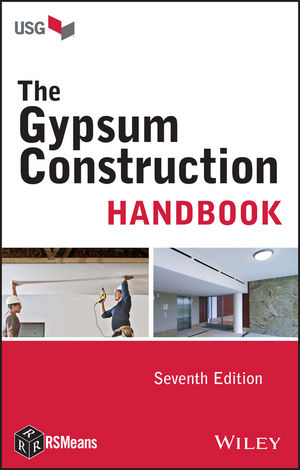Gypsum Association Releases Revised Technical Documents

The Gypsum Association (GA) is pleased to announce that two technical documents, GA-236, Joint Treatment Under Extreme Weather Conditions and GA-253, Application of Gypsum Sheathing, have been revised and updated. Both documents are available for free download from the GA Bookstore as a service to the design and construction community.
For more than 15 years, GA-236 has provided special instructions for treating joints during weather extremes. Periodic revision of the document ensures that recommendations reflect current best practices. Very high or very low temperatures and humidity levels affect the drying times of joint compounds. Moreover, swings in temperature or moisture levels can cause movement in wood or steel framing. GA-236-2016 continues to offer common sense measures designed to mitigate problems associated with extreme weather.
New to GA-236-2016 is a graphic developed by the Drywall Finishing Council (DWFC) that illustrates joint compound drying times as a function of temperature at a specific relative humidity. According to DWFC President Robert Negri, "The Council responded to the drywall finishing trade's need for practical, value-added information that related to finishing in a realistic time frame, which is within 5 days or less. Improving the quality and standards of the drywall finishing industry through informative publications like GA-236 is a win-win for the drywall finishing and decorating trades as well as the manufacturers of drywall finishing products."
GA Director of Technical Services Michael Schmeida praised the DWFC saying, "This graphic representation of drying times under specific conditions provides great guidance for contractors in the field, especially those who work in regions where temperature and humidity levels are a frequent concern." Schmeida went on to note, "The revision of GA-236 is just the latest example of successful collaboration between the DWFC and the GA and reflects our mutual commitment to the industry we serve."
GA-253-2016, Application of Gypsum Sheathing describes proper methods of handling, storing, and applying a gypsum panel product type that is increasingly popular as a substrate for exterior cladding. With a water-resistant gypsum core and water repellent surface, gypsum sheathing is used under wood, aluminum, or vinyl siding as well as brick, exterior insulation and finishing systems (EIFS) and stucco exterior finishes. GA-253 clarifies fastener recommendations and better defines the appropriate water-resistant barriers for use in conjunction with gypsum sheathing.
Because gypsum sheathing frequently is specified as part of a fire-resistive system, GA-253-2016 mandates that construction details comply with systems tested by recognized testing facilities using ASTM E119 or CAN/ULC-S101 fire testing procedures. In addition, both fire-rated systems and sound-rated systems that incorporate gypsum sheathing must follow the requirements described in the GA-600, Fire Resistance Design Manual, now in its 21st edition.
Looking for a reprint of this article?
From high-res PDFs to custom plaques, order your copy today!






